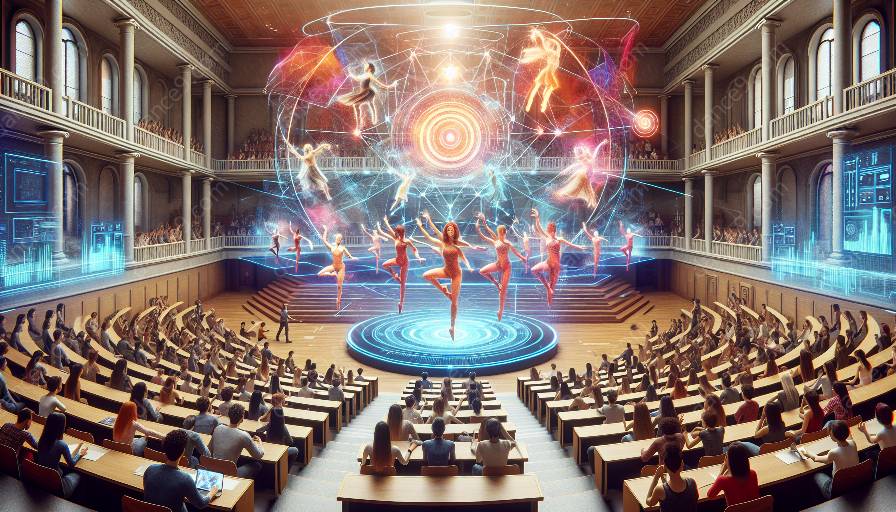Dance and Virtual Reality (VR) are two diverse worlds that have now intersected to revolutionize the way dancers train and perform. The integration of VR technology has opened up new possibilities for enhancing spatial awareness and movement kinetics in university dance training, offering an immersive and interactive experience for dancers to explore.
Understanding the Role of Virtual Reality:
Virtual Reality technology creates a simulated environment that allows users to interact and engage with computer-generated experiences in a realistic way. This technology has been widely adopted across various industries, and the dance community has also recognized its potential in enriching the training and performance experiences of dancers.
Enhancing Spatial Awareness:
One of the key roles of VR in university dance training is its ability to enhance spatial awareness. Dancers can immerse themselves in a virtual environment that simulates different performance spaces, providing them with a deeper understanding of spatial dimensions and movement within these spaces. This can be particularly beneficial for choreography and performance preparation, as dancers can visualize and navigate through virtual venues without physical limitations.
Improving Movement Kinetics:
VR technology also plays a significant role in improving movement kinetics for dancers. By using motion capture and interactive VR experiences, dancers can refine their movement techniques and explore new choreographic ideas in a virtual setting. This enables them to analyze and adjust their movements with precision, leading to enhanced body awareness and control.
Immersive Learning Environments:
University dance programs can leverage VR technology to create immersive learning environments that provide students with a holistic understanding of dance theory and practice. By simulating performances, historical dance forms, and cultural dance styles, students can gain a comprehensive insight into different dance genres and traditions, enriching their educational experience.
Collaborative Opportunities:
VR also offers collaborative opportunities for dancers and choreographers. Through virtual platforms, dancers from different locations can come together in a shared virtual space to engage in collaborative choreographic projects, explore improvisation techniques, and exchange creative ideas. This not only expands the scope of creative collaboration but also enables dancers to connect with peers globally.
Empowering Individualized Training:
With VR, dancers can personalize their training experiences based on their individual needs and goals. They can access a library of virtual dance classes, tutorials, and performances, choosing specific content that aligns with their training objectives. This flexibility allows for personalized skill development and artistic exploration.
Future Directions:
The integration of VR in university dance training continues to evolve, paving the way for new advancements in dance education and performance. As technology progresses, we can anticipate the development of VR tools specifically tailored to dance training, offering advanced motion tracking, feedback systems, and virtual rehearsal spaces.
Overall, virtual reality has emerged as a transformative tool in enhancing spatial awareness and movement kinetics in university dance training, enriching the educational journey of dancers and propelling the art of dance into the digital age.

































